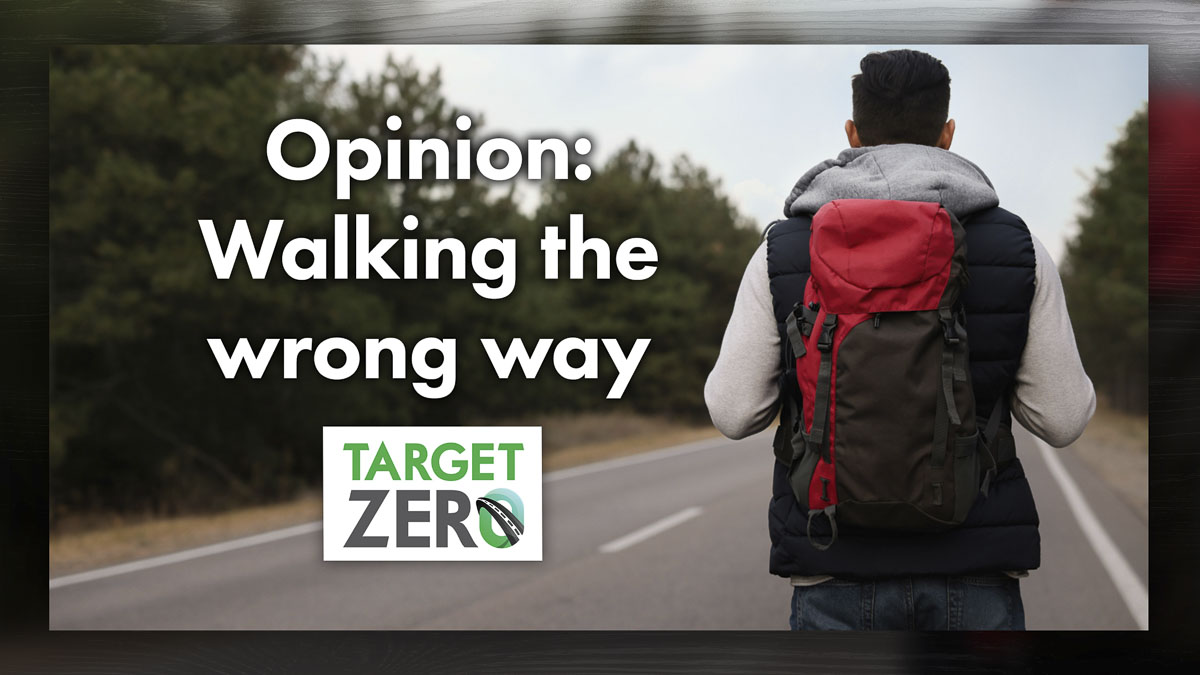
Doug Dahl addresses a question about police ticketing pedestrians on the correct side of the road
Doug Dahl
The Wise Drive
Q: Why don’t the police ticket pedestrians walking on the right side of the road with their back to traffic, instead of facing traffic so they can see what could hit them, as required by WA state law? Unfortunately, those hit with their back to traffic believe they should walk on the right.
A: I think you might have answered your own question, so I’ll ask another one. What’s the point of traffic enforcement? I’ll accept answers along the lines of, “to increase safe driving behaviors” or “to reduce crashes.” (And since somebody reading this probably answered, “to generate revenue,” if that were true tell me why the traffic enforcement unit is the first thing to get cut when a police department has a budget shortfall.)

Yes, you should walk facing traffic. As you mentioned, the law requires it, but even if it wasn’t the law it’s in your own self-interest. When you’re travelling unprotected in proximity to multi-ton projectiles, wouldn’t you want to know what’s coming at you? In the last five years, 26 people in Washington have been killed by a vehicle while walking with their back toward traffic. But is writing tickets always the best way to solve this problem?
I’ll defer to the police on that, but just because someone was walking with their back toward traffic doesn’t mean that was the reason for the crash. In fatal crashes with pedestrians, roughly a third of the time the driver is impaired, distracted, or speeding. And about half the time the pedestrian is impaired. Any of those factors are bigger contributors than the direction the pedestrian was facing.
And then there’s the roadway itself. The law only permits pedestrians to walk in the roadway (“as far as practicable to the outside edge”) when there are no sidewalks or shoulders. If a pedestrian is in the roadway there’s a good chance the built environment is pushing them into that riskier position, regardless of which way they’re facing. They might also be faced with two less-than-optimal choices; walk on the wrong side of a busy street or try to cross it.
You said some people believe that they should walk on the right side of the road. Sure, writing those folks tickets would probably change their behavior, but it’s like driving a nail with a wrecking ball. If the problem is that they don’t know, maybe we should educate them first rather than hitting them with a fine for doing what they thought was the right thing.
For anyone who questions whether pedestrians don’t know which side of the road to walk on, let me share a related story. A few months ago while cycling I was hit by a driver who was passing me (no injuries – just bumped my arm). She then yelled that I should ride facing traffic. No ma’am, that’s exactly the opposite of the rules for cyclists. It’s easy to be confident and still be wrong.
Knowing that we won’t reach everyone, ideally we’ll design roadways that discourage walking in them. Regardless of the rules, when given the option people will generally choose not to put themselves in traffic.
We in the traffic safety world often talk about a safe system approach; one where we consider all the protective layers that contribute to safe travel. We’ve tried for years to make safer road users, with some success, but vehicle engineering, road design, speed limits, post-crash care, and even how we think about land use all contribute to road safety. Sometimes enforcement is the right choice for changing road user behavior, but it’s not our only choice
TheWiseDrive is hosted by Doug Dahl, a Target Zero manager for the Washington Traffic Safety Commission.
Also read:
- Opinion: In-n-Out Burger is so much more than fast food for so many of usPaul Valencia shares why In-n-Out Burger means more than just fast food for countless fans as Ridgefield nears its grand opening and Vancouver’s location begins construction.
- Opinion: Washington’s June 2025 budget revisions – revenue up spending up moreMark Harmsworth of the Washington Policy Center critiques the state’s latest budget revisions, warning that new taxes—not organic growth—are driving revenue. He calls for fiscal restraint and long-term reform.
- Opinion: Pedestrian control signalsDoug Dahl explains Washington state law regarding crosswalks and pedestrian signals, offering safety insights and common misunderstandings about traffic control at intersection
- Letter: ‘How can five part-time legislators without research support or reliable access to information serve as an effective check on six full-time elected executives’Bob Zak expresses agreement with recent opinions on the Clark County Charter’s imbalance and endorses John Ley’s transit preference while questioning light rail costs and Council effectiveness.
- POLL: Should the Clark County Clerk remain an elected position?Following public opposition, Clark County Council dropped a proposal to make the clerk an appointed role. Readers can now weigh in through this week’s poll on whether the clerk should remain elected.











In the last five years, 26 people in Washington have been killed by a vehicle while walking with their back toward traffic.
This begs the QUESTION ,,, how many have been killed walking facing traffic?